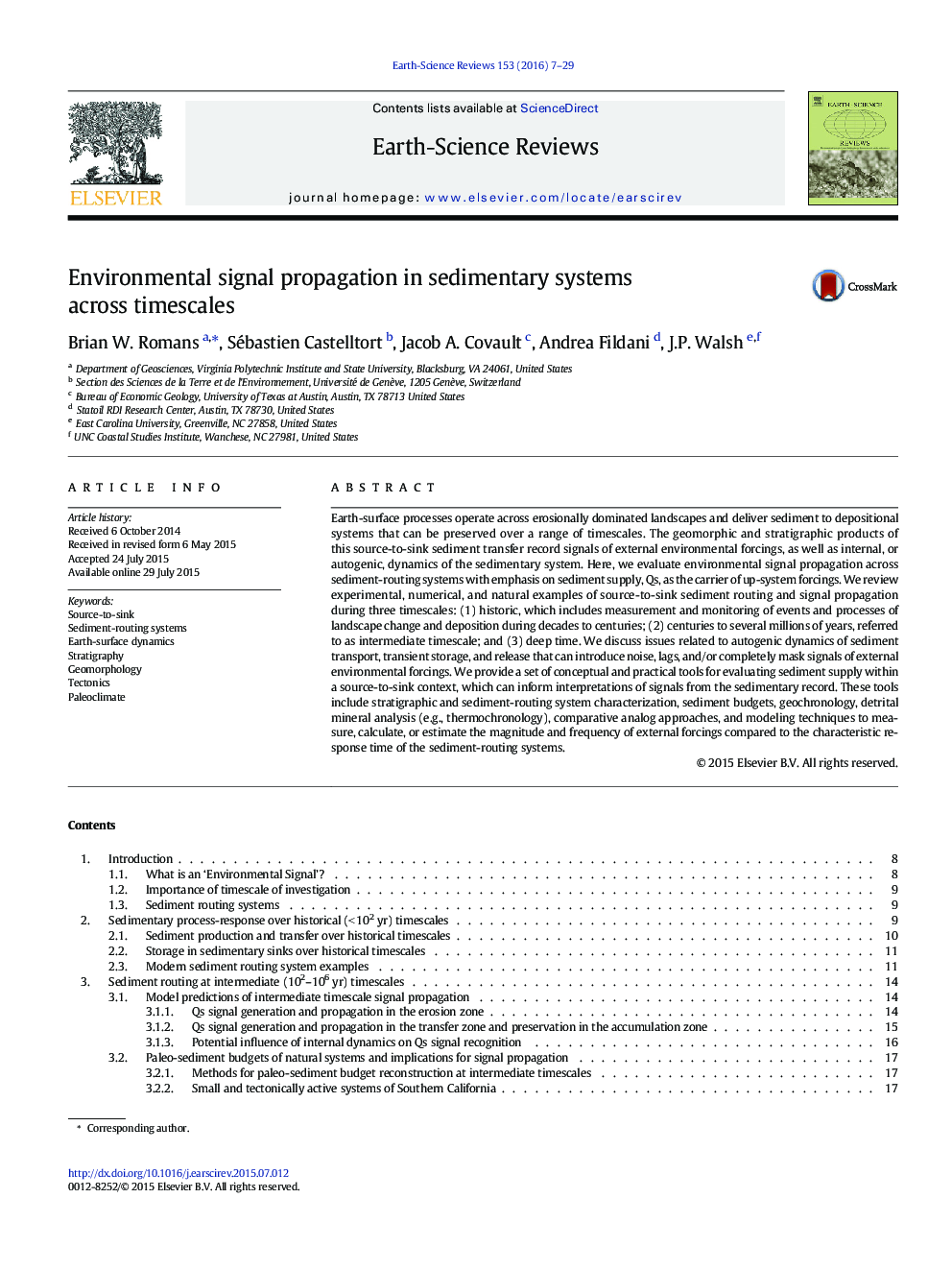| Article ID | Journal | Published Year | Pages | File Type |
|---|---|---|---|---|
| 4725604 | Earth-Science Reviews | 2016 | 23 Pages |
Earth-surface processes operate across erosionally dominated landscapes and deliver sediment to depositional systems that can be preserved over a range of timescales. The geomorphic and stratigraphic products of this source-to-sink sediment transfer record signals of external environmental forcings, as well as internal, or autogenic, dynamics of the sedimentary system. Here, we evaluate environmental signal propagation across sediment-routing systems with emphasis on sediment supply, Qs, as the carrier of up-system forcings. We review experimental, numerical, and natural examples of source-to-sink sediment routing and signal propagation during three timescales: (1) historic, which includes measurement and monitoring of events and processes of landscape change and deposition during decades to centuries; (2) centuries to several millions of years, referred to as intermediate timescale; and (3) deep time. We discuss issues related to autogenic dynamics of sediment transport, transient storage, and release that can introduce noise, lags, and/or completely mask signals of external environmental forcings. We provide a set of conceptual and practical tools for evaluating sediment supply within a source-to-sink context, which can inform interpretations of signals from the sedimentary record. These tools include stratigraphic and sediment-routing system characterization, sediment budgets, geochronology, detrital mineral analysis (e.g., thermochronology), comparative analog approaches, and modeling techniques to measure, calculate, or estimate the magnitude and frequency of external forcings compared to the characteristic response time of the sediment-routing systems.
